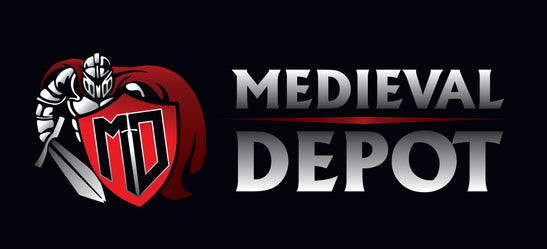Medieval Swords
-
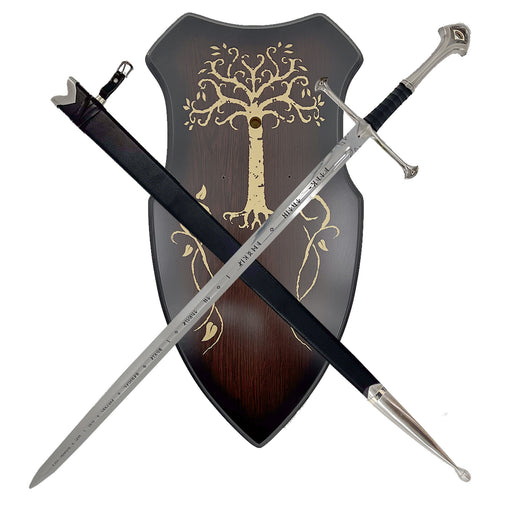 Sold out
Sold out
Lord of the Rings Anduril Sword of Aragorn with Plaque & Scabbard
Original price $279.99 CAD - Original price $279.99 CADOriginal price$279.99 CAD$279.99 CAD - $279.99 CADCurrent price $279.99 CADDescription: Embark on a journey through Middle-earth with this exceptional replica of the Anduril Sword from Lord of the Rings. Standing at an imp...
View full detailsOriginal price $279.99 CAD - Original price $279.99 CADOriginal price$279.99 CAD$279.99 CAD - $279.99 CADCurrent price $279.99 CADSold out -
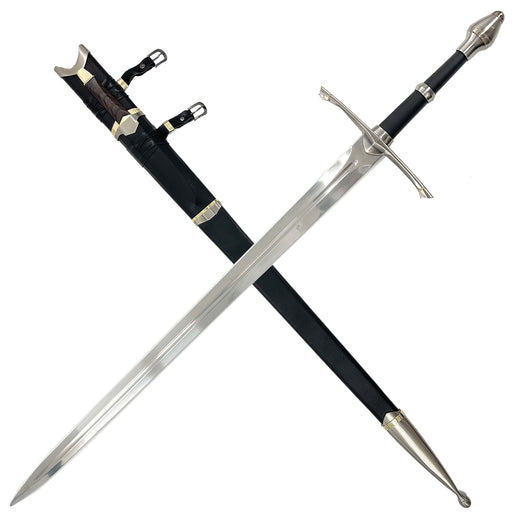 Sale
Sale
Sale
Sale
Medieval Strider Sword with Knife In The Scabbard
Original price $249.99 CAD - Original price $249.99 CADOriginal price$249.99 CAD$249.99 CAD - $249.99 CADCurrent price $249.99 CADDescription:This magnificent collectible combination sword also contains a small knife! It measures 47.4 inches overall with a long 36" false-edge ...
View full detailsOriginal price $249.99 CAD - Original price $249.99 CADOriginal price$249.99 CAD$249.99 CAD - $249.99 CADCurrent price $249.99 CADSale Sale -
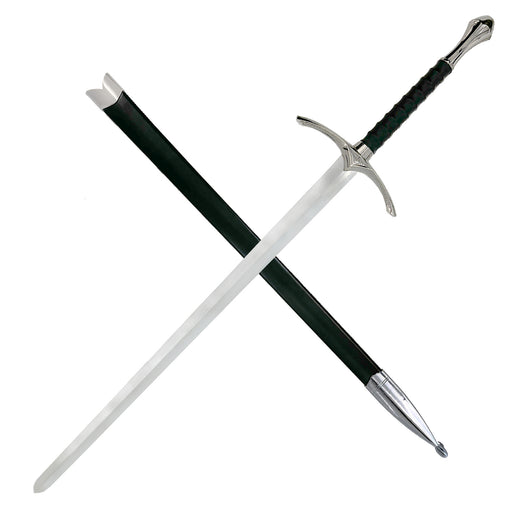 Sale
Sale
Sale
Sale
Replica Glamdring Gandalf Sword with Black Scabbard
Original price $179.99 CAD - Original price $179.99 CADOriginal price$179.99 CAD$179.99 CAD - $179.99 CADCurrent price $179.99 CADDescription:Replica of Glamdring sword, owner Gandalf in the movie Lord of the Rings and Hobbit. The inscription of Elven runes in the crossguard m...
View full detailsOriginal price $179.99 CAD - Original price $179.99 CADOriginal price$179.99 CAD$179.99 CAD - $179.99 CADCurrent price $179.99 CADSale Sale -
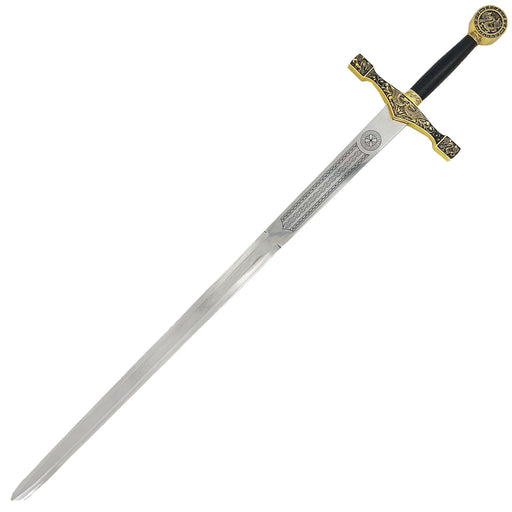 Sale
Sale
Sale
Sale
Sword of Excalibur King Arthur Golden
Original price $179.99 CADOriginal price $179.99 CAD - Original price $179.99 CADOriginal price $179.99 CADCurrent price $149.99 CAD$149.99 CAD - $149.99 CADCurrent price $149.99 CADDescription:Sword of Excalibur King Arthur Golden is by far the most famous sword in Medieval European history. This was not the sword drawn from t...
View full detailsOriginal price $179.99 CADOriginal price $179.99 CAD - Original price $179.99 CADOriginal price $179.99 CADCurrent price $149.99 CAD$149.99 CAD - $149.99 CADCurrent price $149.99 CADSale Sale -
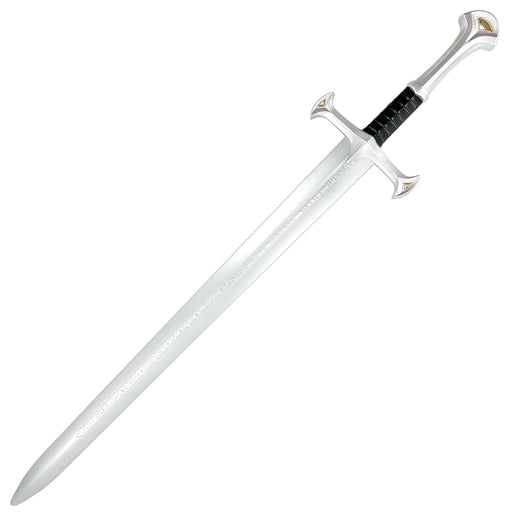 Sold out
Sold out
Elven Made Foam LARP Costume Cosplay Replica Movie Sword
Original price $59.99 CAD - Original price $59.99 CADOriginal price$59.99 CAD$59.99 CAD - $59.99 CADCurrent price $59.99 CADDescription:This sword is greatly inspired by the sword made for Aragorn from the remnants of the legendary great sword, Narsil. The 42” replica fo...
View full detailsOriginal price $59.99 CAD - Original price $59.99 CADOriginal price$59.99 CAD$59.99 CAD - $59.99 CADCurrent price $59.99 CADSold out -
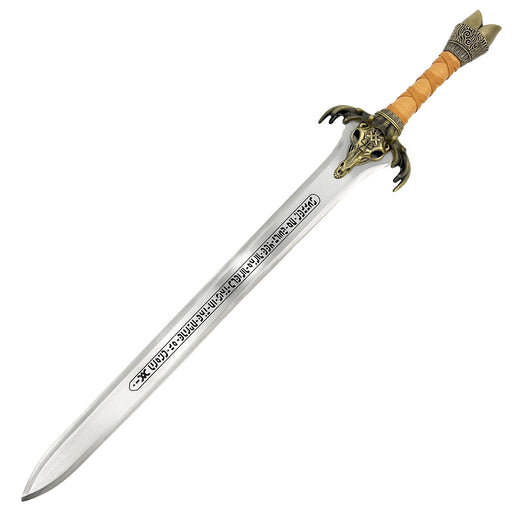 Sale
Sale
Sale
Sale
Barbarian Father's Medieval Rams Head Sword
Original price $179.99 CADOriginal price $179.99 CAD - Original price $179.99 CADOriginal price $179.99 CADCurrent price $149.99 CAD$149.99 CAD - $149.99 CADCurrent price $149.99 CADDescription:Here is an awesome Barbarian Sword. This awesome sword measures 39 inches overall with a 29 inch 440 stainless steel blade. There is an...
View full detailsOriginal price $179.99 CADOriginal price $179.99 CAD - Original price $179.99 CADOriginal price $179.99 CADCurrent price $149.99 CAD$149.99 CAD - $149.99 CADCurrent price $149.99 CADSale Sale -
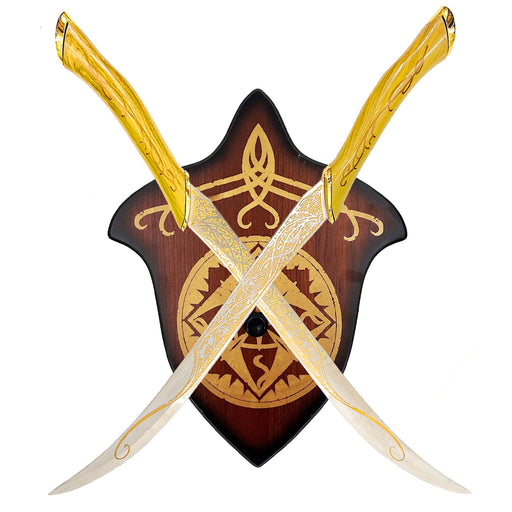 Sold out
Sold out
Legolas LOTR Fantasy Fighting Swords with Plaque
Original price $129.99 CAD - Original price $129.99 CADOriginal price$129.99 CAD$129.99 CAD - $129.99 CADCurrent price $129.99 CADDescription: From the epic series lord of the rings we bring you a beautiful replica of Legolas’s daggers. This wonderful reproduction comes with ...
View full detailsOriginal price $129.99 CAD - Original price $129.99 CADOriginal price$129.99 CAD$129.99 CAD - $129.99 CADCurrent price $129.99 CADSold out -
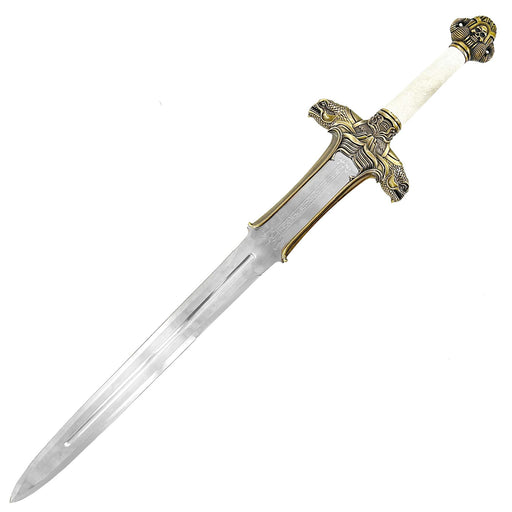 Sale
Sale
Sale
Sale
Medieval Barbarian Antiquated Sword
Original price $179.99 CAD - Original price $179.99 CADOriginal price$179.99 CAD$179.99 CAD - $179.99 CADCurrent price $179.99 CADDescription:The sword is very well made with extreme details, down to the grain. This is an essential piece to add to any fantasy collection. The s...
View full detailsOriginal price $179.99 CAD - Original price $179.99 CADOriginal price$179.99 CAD$179.99 CAD - $179.99 CADCurrent price $179.99 CADSale Sale -
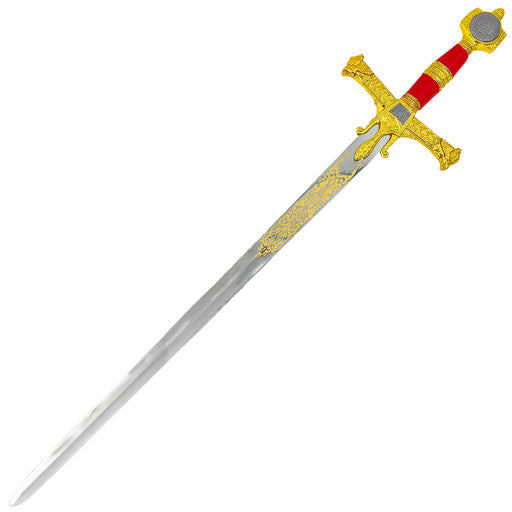 Sale
Sale
Sale
Sale
King Solomon Great Sword Red
Original price $199.99 CADOriginal price $199.99 CAD - Original price $199.99 CADOriginal price $199.99 CADCurrent price $179.99 CAD$179.99 CAD - $179.99 CADCurrent price $179.99 CADDescription:This King Solomon Sword is 51 inches overall. This classic recreation offers precision craftsmanship. The 37 inch stainless steel blade...
View full detailsOriginal price $199.99 CADOriginal price $199.99 CAD - Original price $199.99 CADOriginal price $199.99 CADCurrent price $179.99 CAD$179.99 CAD - $179.99 CADCurrent price $179.99 CADSale Sale -
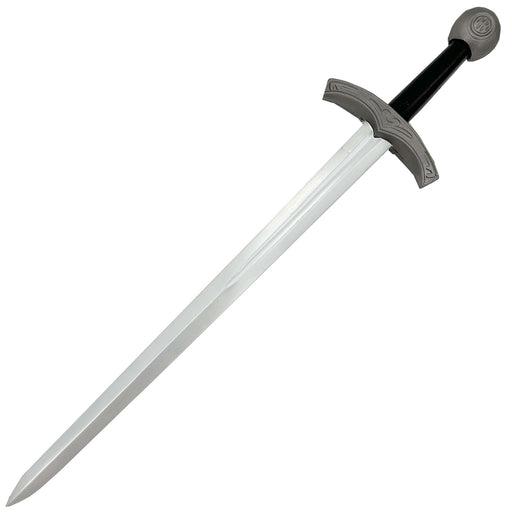 Sale
Sale
Sale
Sale
Spherical Pommel Knightly Foam Shortsword
Original price $49.99 CAD - Original price $49.99 CADOriginal price$49.99 CAD$49.99 CAD - $49.99 CADCurrent price $49.99 CADDescription: Step into the arena of historical combat with the Spherical Pommel Knightly Foam Shortsword, designed for dynamic mock battles and med...
View full detailsOriginal price $49.99 CAD - Original price $49.99 CADOriginal price$49.99 CAD$49.99 CAD - $49.99 CADCurrent price $49.99 CADSale Sale -
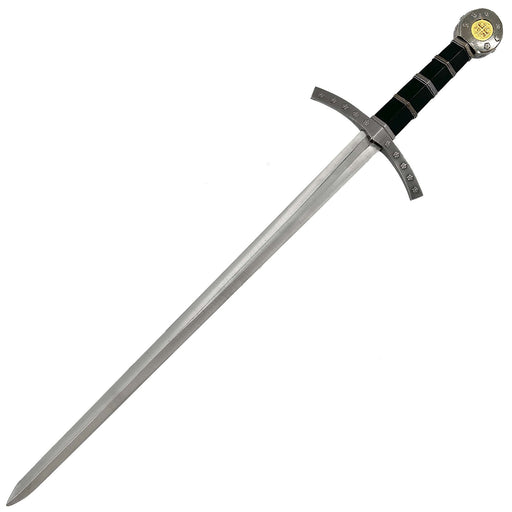 Sold out
Sold out
Crusader Knights Of Templar Short Sword Dagger
Original price $79.99 CADOriginal price $79.99 CAD - Original price $79.99 CADOriginal price $79.99 CADCurrent price $59.99 CAD$59.99 CAD - $59.99 CADCurrent price $59.99 CADDescription:This is the Black Wooden Crusader Cross Short Sword/Dagger. The five crosses came to become the symbol of the Kingdom of Jerusalem. The...
View full detailsOriginal price $79.99 CADOriginal price $79.99 CAD - Original price $79.99 CADOriginal price $79.99 CADCurrent price $59.99 CAD$59.99 CAD - $59.99 CADCurrent price $59.99 CADSold out -
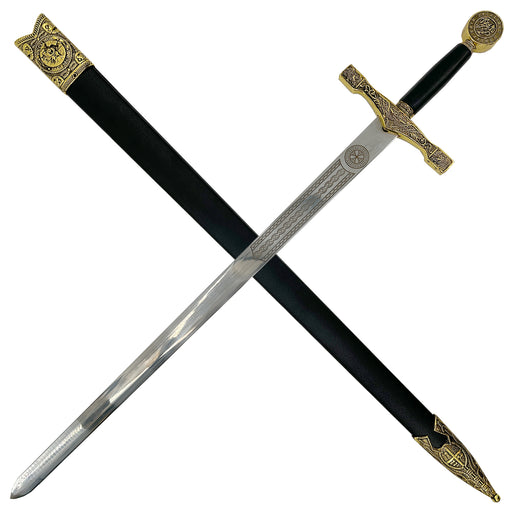 Sale
Sale
Sale
Sale
King Arthur Excalibur Replica Longsword Gold
Original price $129.99 CAD - Original price $129.99 CADOriginal price$129.99 CAD$129.99 CAD - $129.99 CADCurrent price $129.99 CADDescription: Wield the legend with the King Arthur Excalibur Replica Longsword! Expertly crafted with fine attention to detail, this elegant sword ...
View full detailsOriginal price $129.99 CAD - Original price $129.99 CADOriginal price$129.99 CAD$129.99 CAD - $129.99 CADCurrent price $129.99 CADSale Sale -
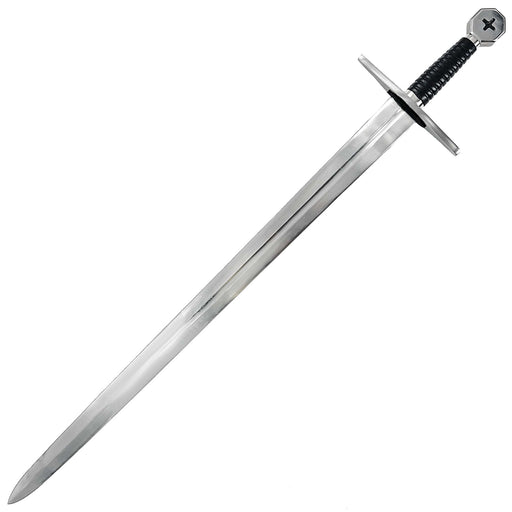 Sold out
Sold out
Knights Templar Long Sword Carbon Steel
Original price $179.99 CAD - Original price $179.99 CADOriginal price$179.99 CAD$179.99 CAD - $179.99 CADCurrent price $179.99 CADDescription:Exquisite metal working was forged to life in this Knights Templar functional long sword. A thick central ridge is accentuated by a smo...
View full detailsOriginal price $179.99 CAD - Original price $179.99 CADOriginal price$179.99 CAD$179.99 CAD - $179.99 CADCurrent price $179.99 CADSold out -
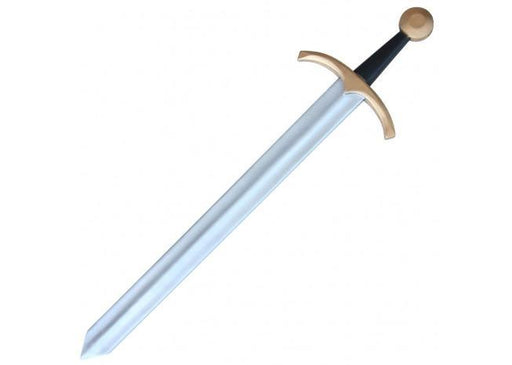 Sale
Sale
Sale
Sale
Hand and A Half Medieval Tewkesbury Foam Sword
Original price $59.99 CAD - Original price $59.99 CADOriginal price$59.99 CAD$59.99 CAD - $59.99 CADCurrent price $59.99 CADDescription:In the Wars of the Roses the Battle of Tewkesbury was fought which is where this style sword gets its namesake from. Many of valiant k...
View full detailsOriginal price $59.99 CAD - Original price $59.99 CADOriginal price$59.99 CAD$59.99 CAD - $59.99 CADCurrent price $59.99 CADSale Sale -
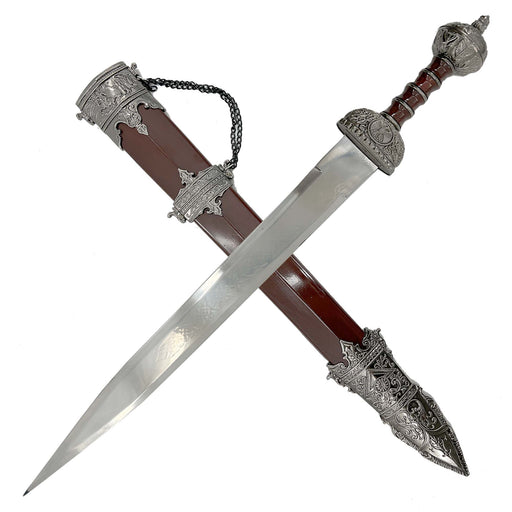 Sale
Sale
Sale
Sale
Divine Roman Empire Historical Short Sword
Original price $149.99 CAD - Original price $149.99 CADOriginal price$149.99 CAD$149.99 CAD - $149.99 CADCurrent price $149.99 CADDescription: Command the presence of ancient Rome with the Divine Roman Empire Historical Short Sword, a piece that embodies the grandeur and artis...
View full detailsOriginal price $149.99 CAD - Original price $149.99 CADOriginal price$149.99 CAD$149.99 CAD - $149.99 CADCurrent price $149.99 CADSale Sale -
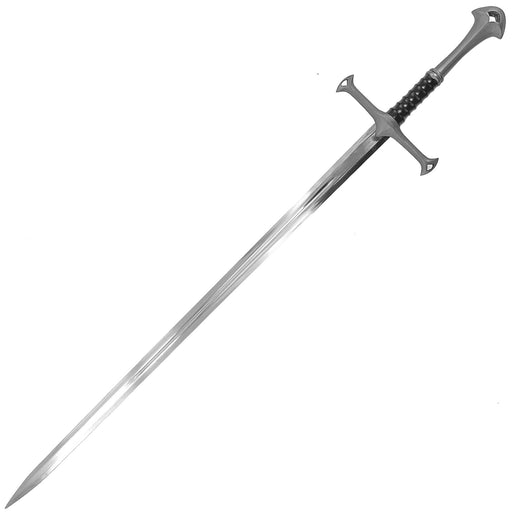 Sale
Sale
Sale
Sale
Darkened Medieval King’s Blade Sword
Original price $179.99 CAD - Original price $179.99 CADOriginal price$179.99 CAD$179.99 CAD - $179.99 CADCurrent price $179.99 CADDescription:Dare to wield this sword in battle as it will not be defeated. Rally your men to fight at your side. Hold this sword high for all to se...
View full detailsOriginal price $179.99 CAD - Original price $179.99 CADOriginal price$179.99 CAD$179.99 CAD - $179.99 CADCurrent price $179.99 CADSale Sale -
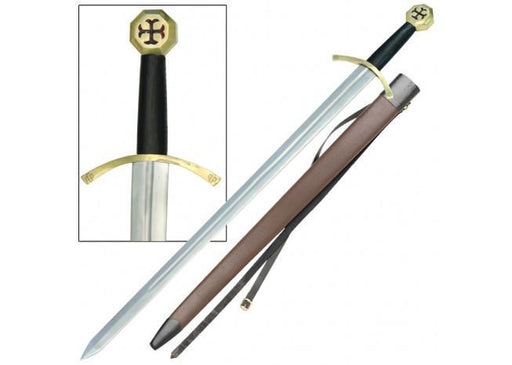 Sold out
Sold out
Order of the Temple Medieval Knights Sword
Original price $179.99 CAD - Original price $179.99 CADOriginal price$179.99 CAD$179.99 CAD - $179.99 CADCurrent price $179.99 CADDescription:Templar knights were among the most skilled fighting units of the Crusades. They were easily identified by their white mantles with a ...
View full detailsOriginal price $179.99 CAD - Original price $179.99 CADOriginal price$179.99 CAD$179.99 CAD - $179.99 CADCurrent price $179.99 CADSold out -
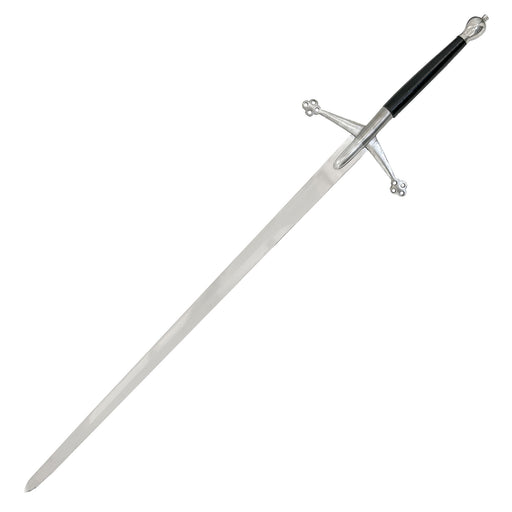 Sale
Sale
Sale
Sale
Medieval Scottish Claymore Highland Sword
Original price $299.99 CADOriginal price $299.99 CAD - Original price $299.99 CADOriginal price $299.99 CADCurrent price $279.99 CAD$279.99 CAD - $279.99 CADCurrent price $279.99 CADDescription: Embrace the legacy of Scottish warriors with this Medieval Scottish Claymore Highland Sword replica. Inspired by the iconic two-handed...
View full detailsOriginal price $299.99 CADOriginal price $299.99 CAD - Original price $299.99 CADOriginal price $299.99 CADCurrent price $279.99 CAD$279.99 CAD - $279.99 CADCurrent price $279.99 CADSale Sale -
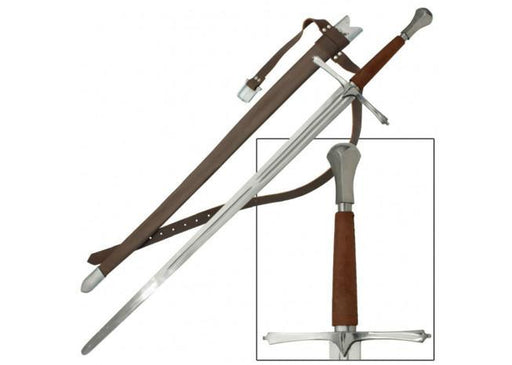 Sold out
Sold out
Late Middle Ages Hand And A Half Sword
Original price $274.99 CAD - Original price $274.99 CADOriginal price$274.99 CAD$274.99 CAD - $274.99 CADCurrent price $274.99 CADDescription:This fully functional historical reproduction is crafted after a sword design which was prominent in medieval Europe in the 16th Centur...
View full detailsOriginal price $274.99 CAD - Original price $274.99 CADOriginal price$274.99 CAD$274.99 CAD - $274.99 CADCurrent price $274.99 CADSold out -
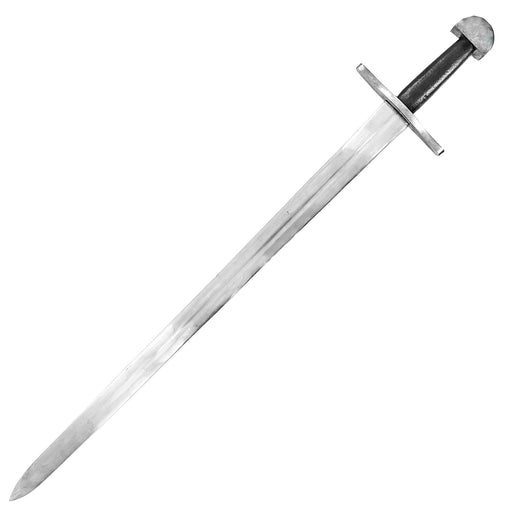 Sale
Sale
Sale
Sale
Authentic Battle Ready Viking Long sword
Original price $179.99 CAD - Original price $179.99 CADOriginal price$179.99 CAD$179.99 CAD - $179.99 CADCurrent price $179.99 CADDescription:Superior battle ready performance exists in this high carbon steel blade that shines with professional excellence. The full tang of the...
View full detailsOriginal price $179.99 CAD - Original price $179.99 CADOriginal price$179.99 CAD$179.99 CAD - $179.99 CADCurrent price $179.99 CADSale Sale -
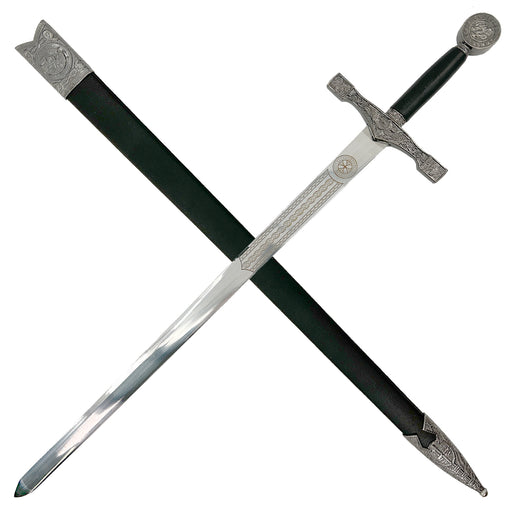 Sale
Sale
Sale
Sale
King Arthur Excalibur Replica Longsword - Silver
Original price $129.99 CAD - Original price $129.99 CADOriginal price$129.99 CAD$129.99 CAD - $129.99 CADCurrent price $129.99 CADDescription:Expertly crafted with fine attention to detail and an elegant design, this immaculate sword is a fitting representation of fabled King ...
View full detailsOriginal price $129.99 CAD - Original price $129.99 CADOriginal price$129.99 CAD$129.99 CAD - $129.99 CADCurrent price $129.99 CADSale Sale -
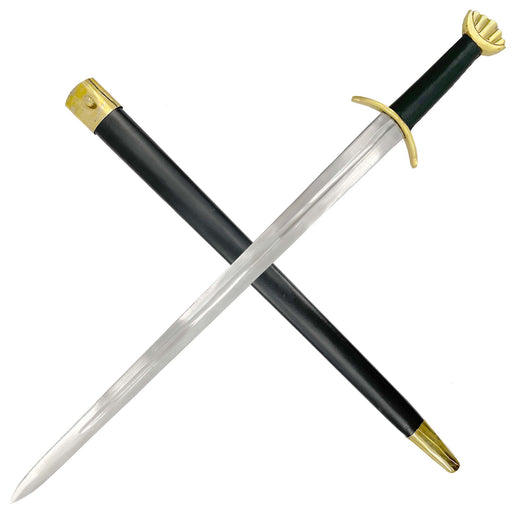 Sale
Sale
Sale
Sale
Brass Noble Savage Viking Combat Sword
Original price $179.99 CAD - Original price $179.99 CADOriginal price$179.99 CAD$179.99 CAD - $179.99 CADCurrent price $179.99 CADDescription:The word Viking was introduced into Modern English during the 18th-century Viking revival, at which point it acquired romanticized hero...
View full detailsOriginal price $179.99 CAD - Original price $179.99 CADOriginal price$179.99 CAD$179.99 CAD - $179.99 CADCurrent price $179.99 CADSale Sale -
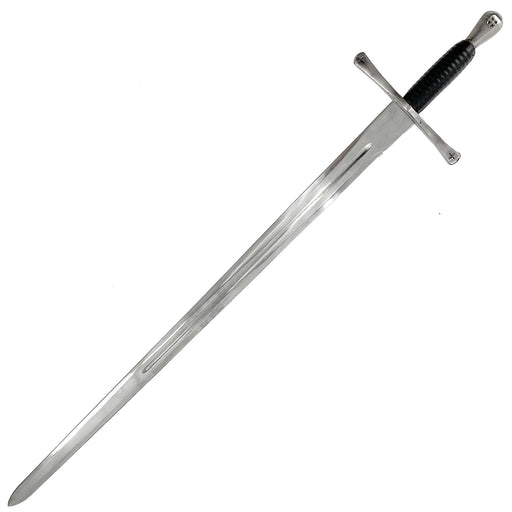 Sale
Sale
Sale
Sale
Knights of Malta Hand And A Half Bastard Sword
Original price $149.99 CAD - Original price $149.99 CADOriginal price$149.99 CAD$149.99 CAD - $149.99 CADCurrent price $149.99 CADDescription:Expertly crafted from a sword design prominent in medieval Europe and featured in many battles, this particular sword is named after th...
View full detailsOriginal price $149.99 CAD - Original price $149.99 CADOriginal price$149.99 CAD$149.99 CAD - $149.99 CADCurrent price $149.99 CADSale Sale -
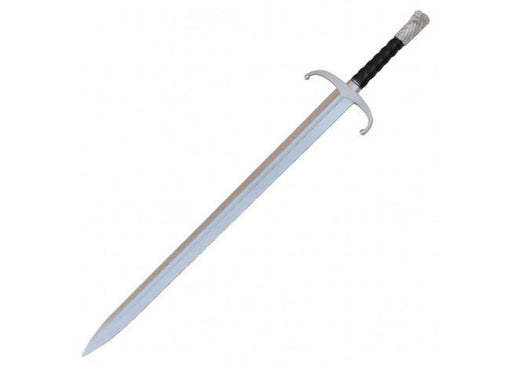 Sold out
Sold out
Medieval Dragon Battle Foam Long Sword
Original price $59.99 CAD - Original price $59.99 CADOriginal price$59.99 CAD$59.99 CAD - $59.99 CADCurrent price $59.99 CADDescription:This blade was given as a reward for a saved life to the King.. It is made from polyurethane foam with a 10mm inner core. This fibrous ...
View full detailsOriginal price $59.99 CAD - Original price $59.99 CADOriginal price$59.99 CAD$59.99 CAD - $59.99 CADCurrent price $59.99 CADSold out
Discover our extensive collection of medieval swords for sale! Ideal for collectors and enthusiasts alike, these blades, crafted with precision, are perfect for reenactments or display. Buy yours today!
Historical Significance of Medieval Swords
The story of medieval swords stretches far beyond the battlefield, woven deeply into the fabric of society and the art of warfare during the Middle Ages. These swords were more than mere weapons—they were powerful symbols of honor, courage, and status. In a world guided by the codes of chivalry, a sword often marked a knight’s initiation, presented in solemn ceremonies as a rite of passage into the noble life of arms. Each blade carried with it the weight of responsibility and the promise of loyalty, justice, and strength. Beyond their practical use in combat, these swords stood as emblems of power, embodying the ideals and values that shaped the lives of those who bore them, leaving behind stories that echo through history.
The artistry and craftsmanship involved in creating medieval swords were indicative of their esteemed place in society, often passed down through generations as cherished family heirlooms. The intricate designs and exceptional craftsmanship of these swords tell the story of the masterful blacksmiths and artisans whose skill and dedication brought each blade to life. For enthusiasts today, the availability of medieval swords for sale allows a tangible connection to this rich historical past, offering collectors and historians alike the opportunity to own a piece of a bygone era, each sword carrying with it a narrative of valor and legacy. In essence, medieval swords were far more than mere tools of war; they were icons of a culture that revered the ideals of knighthood and the codes of chivalric honor, leaving a lasting legacy that continues to captivate the modern imagination.
Exploring Types of Medieval Swords
Exploring the world of medieval swords reveals a fascinating array of designs, each crafted for specific combat styles. These blades were more than weapons—they reflected the skill, courage, and status of the warriors who wielded them, carrying stories of history forged in steel. Here's a closer look at some notable medieval swords and their distinct characteristics:
- Arming Sword: Known as the traditional one-handed sword of knights, it was favored for its balance and versatility, making it suitable for both cut and thrust techniques in battle.
- Longsword: With its extended reach and double-handed grip, the longsword excelled in delivering powerful strikes, allowing for a range of offensive and defensive maneuvers.
- Fantasy Medieval Swords: While not historically authentic, these swords draw inspiration from the rich lore of the medieval period, featuring imaginative designs and embellishments that appeal to modern collectors and enthusiasts.
- Two-Handed Sword: Often wielded by warriors who needed to deliver devastating blows, these swords required strength and skill, offering a commanding presence on the battlefield.
Each of these types of medieval swords offered unique advantages, adapted to the demands of warfare and personal preference. The diversity in design and purpose underscores the complexity and sophistication achieved in medieval swords' craftsmanship, attracting aficionados of history and fantasy alike. Whether in historical reenactments or as part of a curated collection, these swords continue to captivate with their storied past and artistic merit.
Craftsmanship and Materials in Medieval Sword Making
The art of crafting medieval swords was a testament to the skill and dedication of the blacksmiths and artisans of the time. The process required not only advanced metallurgical knowledge but also a keen eye for detail and aesthetics. Central to the quality of these weapons was the use of high-quality steel, which provided the necessary balance between flexibility and hardness. This ensured that the sword could withstand the rigors of combat while maintaining a sharp edge. The craftsmanship involved in creating a sword was meticulous, with each piece being hand-forged to perfection. Artisans would often add intricate designs to the blades and hilts, incorporating elements like engravings, inlays, and unique pommel shapes, which served both functional and decorative purposes.
These designs were not just about beauty; they also reflected the individual knight's identity and status. For enthusiasts looking to buy medieval swords today, the market offers a range of options that echo these historical practices. Collectors in Canada and beyond can find replicas and authentic pieces that honor the traditional methods of sword-making. Retailers provide swords that are not only visually stunning, but also crafted with a nod to the past, ensuring that each piece embodies the essence of historical craftsmanship. Whether for reenactment, display, or personal collection, acquiring a medieval sword offers a connection to a rich history of artistry and martial prowess.
Medieval Swords in Modern Culture
Medieval swords continue to hold a significant place in modern culture, captivating enthusiasts and collectors alike. Their allure is evident in historical reenactments, where participants use these weapons to bring the past to life, showcasing the artistry and skill of medieval combat. Beyond the battlefield, they are treasured collectibles, often displayed alongside other medieval weapons like shields, knives, and machetes. The intricate designs and historical significance of these items make them prized possessions for those fascinated by the Middle Ages. Moreover, the availability of medieval swords for sale allows modern-day aficionados to own a piece of history, bridging the gap between past and present. These swords not only serve as tangible links to a bygone era but also inspire a deeper appreciation for the craftsmanship and cultural legacy they represent.
